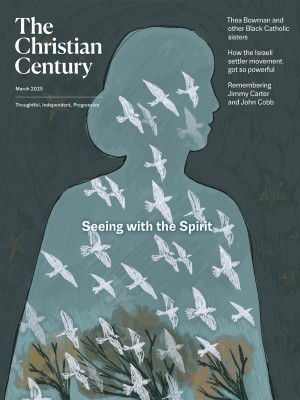March 23, L3 9Luke 13:1-9)
Like any good preacher eager to move his audience into action, Jesus draws on a variety of homiletic approaches in Luke 13. On the one hand, he recalls the scary news of the day, local disasters guaranteed to put the fear of the Lord in anyone within earshot of Jerusalem. He speaks of events now lost to history but presumably vivid in the moment—cultic sacrifices mingled by Pontius Pilate with Galilean blood, a Siloam tower that crushed 18 people in its sudden fall. He grabs their attention and delivers an ultimatum aimed squarely at the complacent: “Unless you repent, you will all perish just as they did.”
But then, leaving aside the shock of this beginning, he asks his hearers to consider something as ordinary as a fig tree, a plant familiar not only in the landscape of ancient Israel but also in its traditions. In the opening of Genesis the fig grows in Eden’s lush garden along with “every tree that is good to the sight and good for food.” It famously keeps company there with the tree of the knowledge of good and evil, which is set apart uniquely and off-limits. When after eating that forbidden fruit Adam and Eve experience shame in their nakedness, it is the nearby fig that provides them with a covering (3:7).
Read our latest issue or browse back issues.
Although connected in this way to the primal human disaster, recollection of the fig tree’s bountiful presence in an unfallen Eden nonetheless carries over into the larger world of the Hebrew Bible. In the Song of Songs, its luscious fruit is the harbinger of spring and of unabashed love (2:13). It also suggests the fertility of a promised land characterized by natural abundance, “a land of vines and fig trees and pomegranates” (Deut. 8:7–10). To describe the security of Solomon’s united reign, we are told that the 12 tribes once lived peacefully in shaded safety, “all of them under their vines and fig trees” (1 Kings 4:25).
Conversely, the destruction of the kingdom is exemplified by the fig tree’s ruin, as when the prophet Joel speaks of an enemy’s invasion: “It has laid waste my vines and splintered my fig trees; it has stripped off their bark and thrown it down; their branches have turned white” (1:7). Used to describe both Israel’s flourishing and its woe, moreover, the fig can also epitomize its ultimate restoration in a future day of the Lord, when “they shall all sit under their own vines and under their own fig trees, and no one shall make them afraid; for the mouth of the Lord of hosts has spoken” (Micah 4:4). The tree will flourish again; it is God’s will.
Against this rich network of Hebrew Bible association Jesus turns to the fig tree in the parable of Luke 13. As we find in Matthew and Mark, it can be seen as his way of speaking about Israel in relation to himself. The tree is meant to bear fruit, but it has not. What then is to be done? In Matthew and Mark, Jesus curses the fig. May it in future never bear fruit (Mark 11:14); may it even wither on the spot (Matt. 21:19). Likewise in Luke, the frustrated owner of the vineyard sees its apparent sterility as cause for immediate action: “See here! For three years I have come looking for fruit on this fig tree, and still I find none. Cut it down! Why should I be wasting the soil?” But in a move characteristic of Luke’s Gospel of second chances—one thinks of the parable of the prodigal son (Luke 15)—a gardener persuades the vineyard owner to forbear at least for a while longer. Let the barren tree be tended and cared for over the course of one more year: let’s see what happens when we fertilize!
The people hearing this parable today are Christians who manifest their own version of the fig tree’s failure, year after year, to bear fruit. The preacher may not want to call for repentance by threatening imminent destruction (”Cut it down!”), though some may choose to do so. But who can resist the gardener’s advice to dig around deeply and replenish the soil, to make use of the manure we have in plenty, to spend more time wisely?
The point, after all, is to bear fruit and to find out what prevents us from doing so. There is no quick remedy. It will take hard work as well as patience, but just think of the possible harvest yet to come. “The fig tree puts forth its figs, and the vines are in blossom: they give forth fragrance. Arise my love, my fair one, and come away” (Songs of Songs 2:13).






